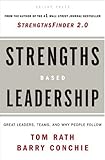From Larry Osborne’s excellent book Sticky Teams: Keeping Your Leadership Team and Staff on the Same Page:
Leaders and leadership teams can easily get sidetracked by the endless pursuit of buy-in. The reason for this is also one reason we overuse surveys and polls: we’re looking for a way to get everyone aboard.
Certainly, leaders and leadership teams need broad buy-in for their current mission and methods of ministry. But when it comes to setting a new direction or starting new initiatives, it’s seldom needed.
Buy-in is overrated. Most of the time, we don’t need buy-in as much as we need permission.
Buy-in is usually defined as having the support of most, if not all, of the key stakeholders (and virtually all of the congregation). It takes a ton of time to get. It’s incredibly elusive.Permission, on the other hand, is relatively easy to acquire, even from those who think your idea is loony and bound to fail. That’s because permission simply means “I’ll let you try it,” as opposed to buy-in, which means, “I’ll back your play.”
I’ve found that most people will grant the pastor, board, or staff permission to try something new as long as they don’t have to make personal changes or express agreement with the idea.
For instance, when we started our first video-venue worship service in 1998, most of the staff and the congregation thought it was a nutty idea. They’d never seen one before, and no one else in the country had yet started one. All they could imagine was a glorified overflow room, and we all know what an overflow room is: it’s punishment for being late. They couldn’t imagine anyone choosing to go to one.
Frankly, if I had believed the buy-in myth (or if our board had), I’d still be trying to convince everyone that video cafes can work. And they’d still think I’m nuts. But since all I asked for was permission to try it, I got the okay; as long as their names weren’t on it, they didn’t have to sell it or go to it, and it didn’t cost too much money.
Needless to say, on this side of the multi-site revolution, video venues proved to be a good idea. But the key to getting it off the ground was my willingness (and that of our board and staff) to settle for permission rather than buy-in.
